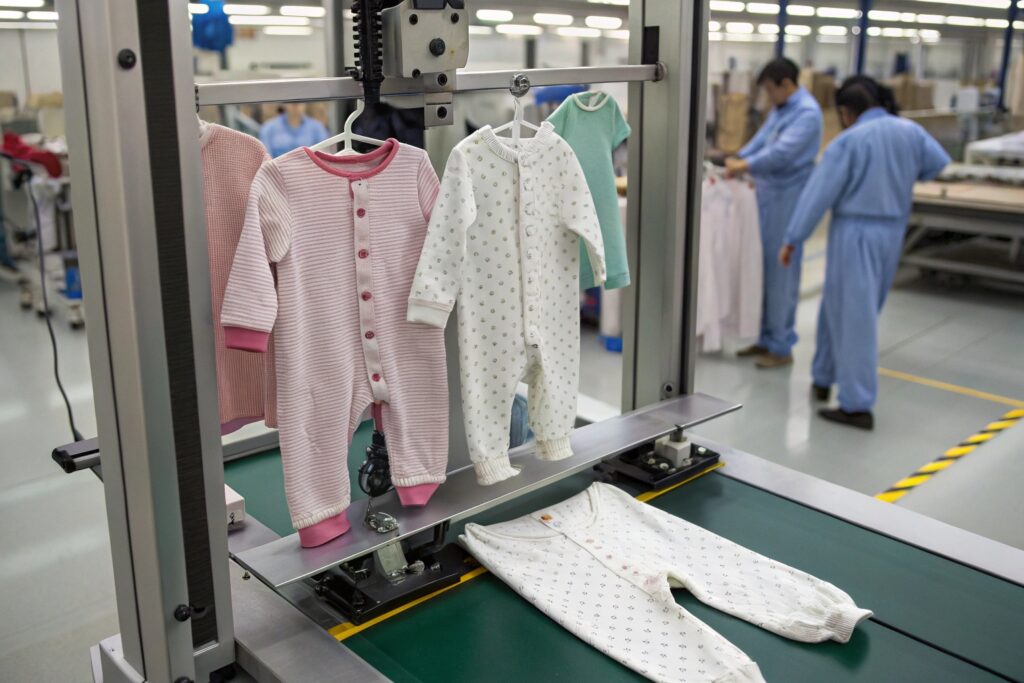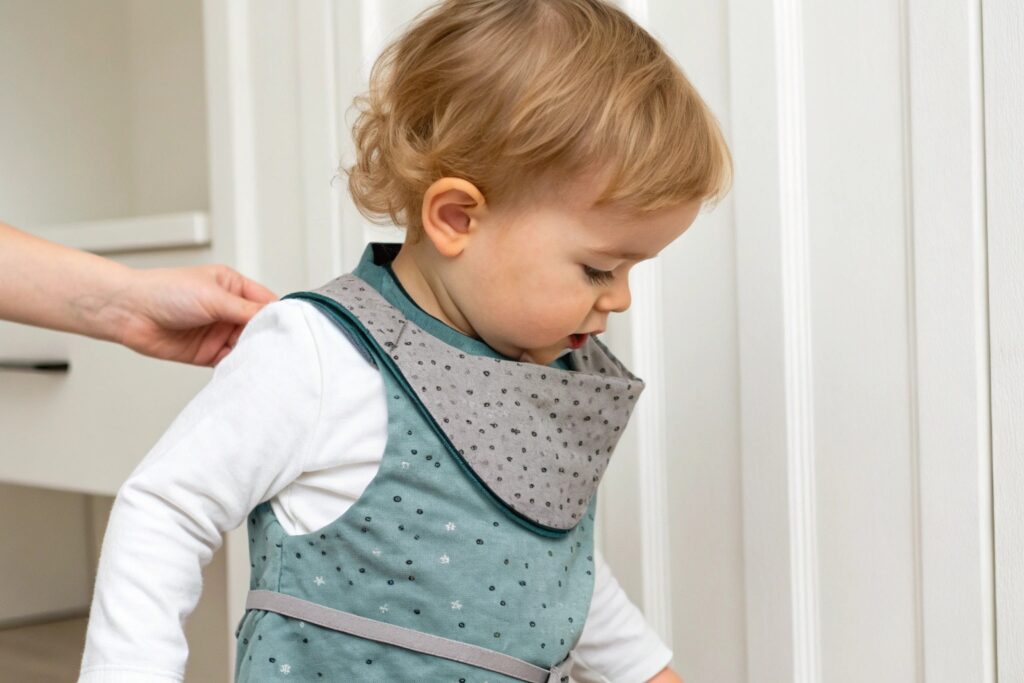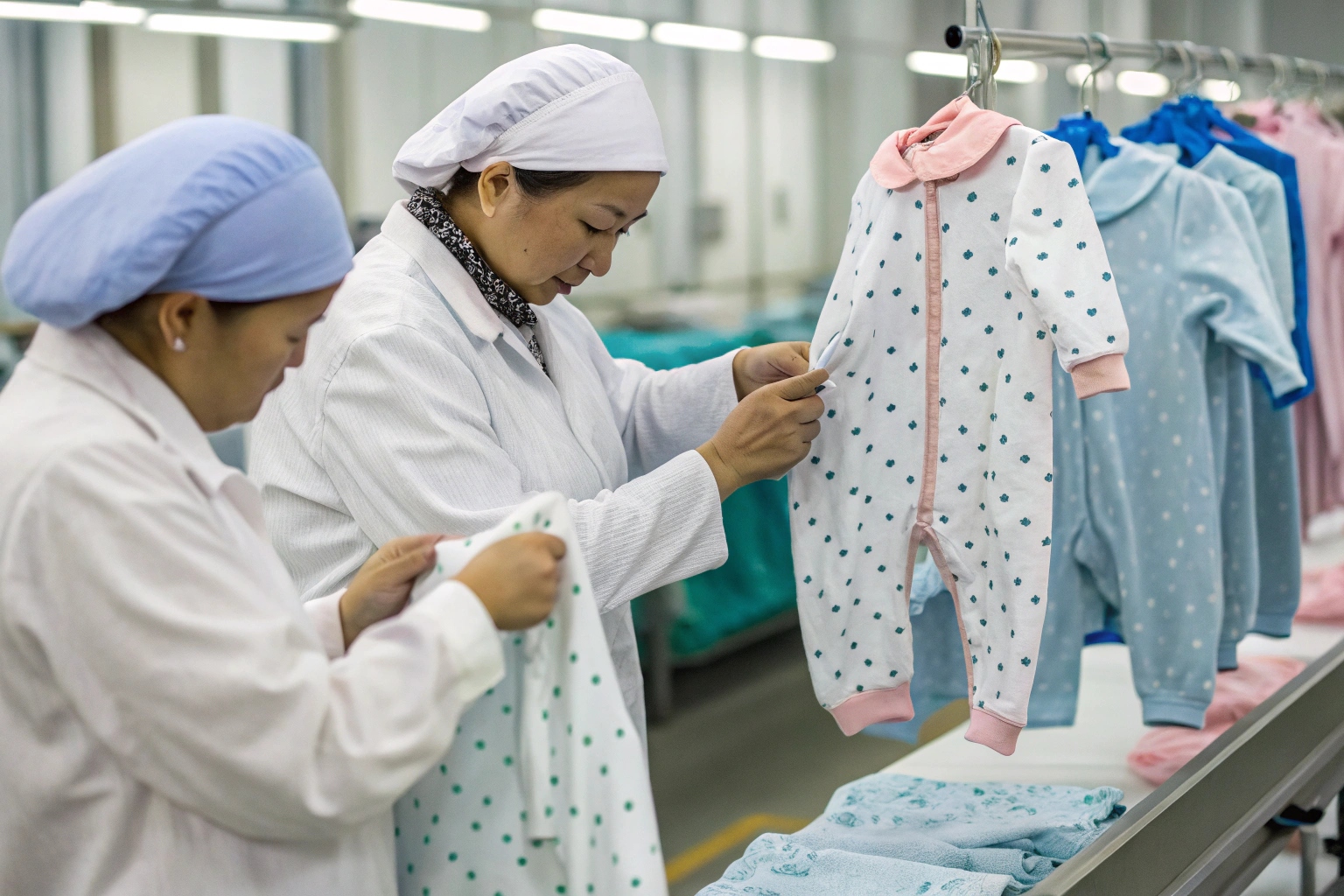Buttons might seem harmless, but when it comes to baby and toddler clothing, they can raise real safety concerns. One loose button can quickly become a choking risk.
Buttons can pose a choking hazard to babies and toddlers if not securely attached or properly designed. While not all buttons are unsafe, baby clothing must follow strict standards to ensure fasteners don’t detach during use or washing.
In this article, I’ll explain the risks, the safety rules, and the best fastener alternatives to keep little ones safe—and stylish.
Are Buttons a Choking Hazard for Babies?
Yes, they can be—and it’s one of the most common hidden risks in babywear.
Buttons are a potential choking hazard if they fall off, especially on clothes for babies under 3 years old. Infants often grab, chew, and explore with their mouths, making loose buttons a serious safety issue.

Why buttons are risky:
| Factor | Why It’s Dangerous |
|---|---|
| Small size | Can block a baby’s airway |
| Easy to pull or chew | Weak stitching increases risk |
| Bright colors / shiny finish | Attracts baby attention |
| Positioned near mouth | On necklines, chest, or cuffs |
Riskier areas for buttons:
- Neckline or collar (easy to reach and mouth)
- Front closure (often tugged during dressing)
- Decorative or non-functional use
At Fumao, we avoid using buttons on infant clothes unless they’re essential and securely reinforced to meet international safety standards.
What Safety Standards Apply to Baby Clothing Fasteners?
Manufacturers can’t just attach any button or snap and call it baby-safe. There are global safety guidelines.
Babywear fasteners must comply with safety standards like CPSIA (U.S.), EN 14682 (EU), and AS/NZS 1249 (Australia). These laws regulate attachment strength, size, placement, and materials used for buttons, snaps, and other components.

Key safety rules for baby clothing fasteners:
| Standard | Applies To | Key Requirements |
|---|---|---|
| CPSIA (USA) | All children’s products under 12 | No lead/phthalates, secure attachment |
| EN 14682 (EU) | Kidswear up to 14 years | No choking risk from small parts |
| ASTM F1816 (USA) | Infant sleepwear | Flame resistance + closure safety |
| ISO 8124-1 | Toys & trims | Size + tension pull test |
Requirements for buttons:
- Must pass pull strength test (usually >90N force)
- No sharp edges or easily breakable parts
- Buttons must not detach during laundering
- Labels must disclose small parts where applicable
At Fumao, we test every batch of babywear buttons with third-party QC teams to meet CPSIA and EN standards before shipment.
How to Choose Safe Buttons for Infant Garments
Not all buttons are off-limits—but they must be chosen and applied carefully.
To choose safe buttons for infant garments, use large, flat, securely sewn buttons made from baby-safe materials like BPA-free plastic or wood. Avoid decorative or glued-on buttons and test attachment strength with a pull test.

What to look for in baby-safe buttons:
| Feature | Why It Matters |
|---|---|
| Flat or low-profile design | Less likely to be chewed or tugged |
| Reinforced cross stitching | Prevents easy removal |
| Shank-free or embedded type | Avoids snagging or twisting |
| Soft-touch edges | Won’t scratch or poke baby skin |
| BPA-free or non-toxic resin | Ensures no harmful chemical exposure |
Testing checklist:
- Pull the button by hand—does it feel loose?
- Run the garment through a wash cycle—does it hold up?
- Look at stitching—are there 4+ passes of strong thread?
Fumao offers sewn-in button testing, and we often recommend hidden snaps or flat sewn fasteners over buttons for garments under 12 months.
What Are the Best Alternatives to Buttons for Toddlers?
Parents often ask: what’s safer or easier than buttons? There are plenty of smart, child-safe fasteners.
The best alternatives to buttons for toddlers are zippers with guards, snaps, hook-and-loop (Velcro), elastic openings, and envelope necklines. These make dressing easier while reducing choking and snagging risks.

Safe and easy fastener options:
| Fastener Type | Ideal Use | Safety/Convenience Benefits |
|---|---|---|
| Plastic snaps (CPSIA tested) | Bodysuits, rompers | Secure, easy to open/close |
| Envelope necklines | T-shirts, onesies | No fastener needed at all |
| Covered zippers | Sleepers, jackets | Smooth close + protective flap |
| Velcro straps | Shoes, bibs | Adjustable, soft, no risk of swallowing |
| Elasticated hems | Pants, sleeves | Easy pull-on without fasteners |
What to avoid:
- Metal buttons or clasps near the neck
- Glued embellishments that can peel off
- Tie cords or small toggles
At Fumao, our toddler collections prioritize easy dressing features—without compromising on safety. Parents appreciate fewer battles and faster changes!
Conclusion
Buttons may look cute, but they must be chosen with care in babywear. From choking risks to compliance regulations, safety should always come first. For infants and toddlers, secure stitching, tested materials, and button-free designs often work best. If you’re designing or sourcing babywear, always ask: is this safe enough for the tiniest customer?










